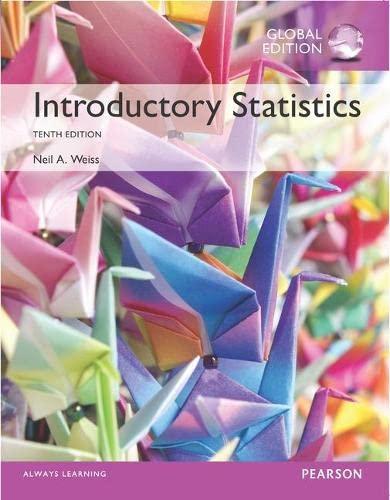Mean as Center of Gravity. Let X be a discrete random variable with a finite number of
Question:
Mean as Center of Gravity. Let X be a discrete random variable with a finite number of possible values, say, x1, x2,..., xm . For convenience, set pk = P(X = xk ), for k = 1, 2, ..., m. Think of a horizontal axis as a seesaw and each pk as a mass placed at point xk on the seesaw. The center of gravity of these masses is defined to be the point c on the horizontal axis at which a fulcrum could be placed to balance the seesaw.
p1 p2 x1 x2 c pm xm Relative to the center of gravity, the torque acting on the seesaw by the mass pk is proportional to the product of that mass with the signed distance of the point xk from
c, that is, to (xk −
c) · pk . Show that the center of gravity equals the mean of the random variable X. (Hint: To balance, the total torque acting on the seesaw must be 0.)
Properties of the Mean and Standard Deviation. In Exercises 5.47 and 5.48, you will develop some important properties of the mean and standard deviation of a random variable. Two of them relate the mean and standard deviation of the sum of two random variables to the individual means and standard deviations, respectively; two others relate the mean and standard deviation of a constant times a random variable to the constant and the mean and standard deviation of the random variable, respectively.
In developing these properties, you will need to use the concept of independent random variables. Two discrete random variables, X and Y , are said to be independent random variables if P({X = x} & {Y = y}) = P(X = x) · P(Y = y)
for all x and y—that is, if the joint probability distribution of X and Y equals the product of their marginal probability distributions. This condition is equivalent to requiring that events {X = x} and {Y = y}
are independent for all x and y. A similar definition holds for independence of more than two discrete random variables.
Step by Step Answer:






